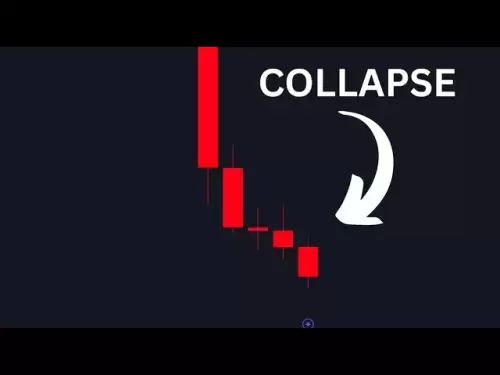-
 Bitcoin
Bitcoin $113900
-1.39% -
 Ethereum
Ethereum $3517
-4.15% -
 XRP
XRP $3.009
1.59% -
 Tether USDt
Tether USDt $0.9997
-0.04% -
 BNB
BNB $766.8
-1.41% -
 Solana
Solana $164.6
-2.38% -
 USDC
USDC $0.9998
-0.02% -
 TRON
TRON $0.3277
0.65% -
 Dogecoin
Dogecoin $0.2023
-1.67% -
 Cardano
Cardano $0.7246
0.05% -
 Hyperliquid
Hyperliquid $38.27
-4.77% -
 Sui
Sui $3.528
-0.52% -
 Stellar
Stellar $0.3890
-0.73% -
 Chainlink
Chainlink $16.16
-2.69% -
 Bitcoin Cash
Bitcoin Cash $539.9
-4.38% -
 Hedera
Hedera $0.2425
-2.00% -
 Avalanche
Avalanche $21.71
-0.97% -
 Toncoin
Toncoin $3.662
5.73% -
 Ethena USDe
Ethena USDe $1.000
-0.02% -
 UNUS SED LEO
UNUS SED LEO $8.964
0.35% -
 Litecoin
Litecoin $107.7
2.33% -
 Shiba Inu
Shiba Inu $0.00001223
-0.40% -
 Polkadot
Polkadot $3.617
-0.97% -
 Uniswap
Uniswap $9.052
-2.49% -
 Monero
Monero $295.1
-3.79% -
 Dai
Dai $0.9999
0.00% -
 Bitget Token
Bitget Token $4.315
-1.85% -
 Pepe
Pepe $0.00001060
0.11% -
 Cronos
Cronos $0.1342
-2.72% -
 Aave
Aave $256.0
-0.87%
What is the data availability layer? Why is it important?
The data availability layer ensures all blockchain nodes access necessary data for transaction verification, enhancing security, scalability, and decentralization.
Apr 11, 2025 at 05:00 pm
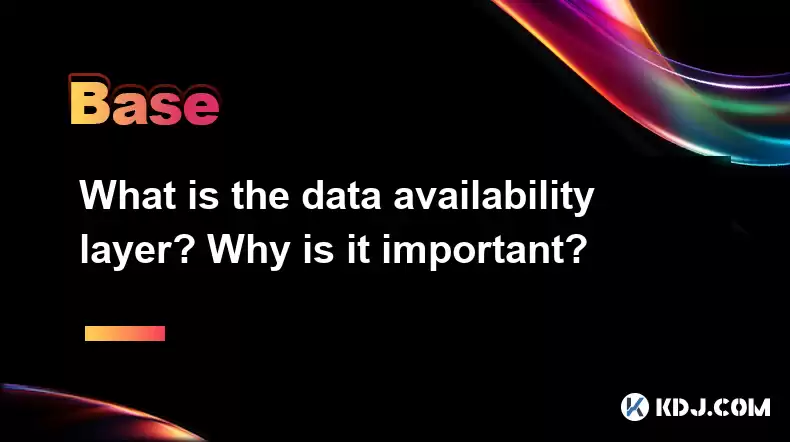
What is the Data Availability Layer?
The data availability layer is a crucial component of blockchain and distributed ledger technologies. It refers to the part of a blockchain system that ensures all participants have access to the data they need to verify transactions and maintain the integrity of the network. This layer is essential for maintaining the decentralized nature of blockchains, as it ensures that no single entity can control or withhold critical information.
In a blockchain, data availability means that all nodes on the network can access the necessary data to validate and process transactions. This includes transaction data, smart contract code, and other relevant information. The data availability layer works by distributing data across multiple nodes, ensuring redundancy and accessibility. Without this layer, the network could be vulnerable to attacks where data is withheld or manipulated, leading to a loss of trust and functionality.
Importance of the Data Availability Layer
The importance of the data availability layer cannot be overstated. It is the backbone that supports the decentralized and trustless nature of blockchain technology. Without a robust data availability layer, the entire system could collapse, as participants would not be able to independently verify transactions and other network activities.
One key reason the data availability layer is important is that it enhances security. By ensuring that data is available to all nodes, it becomes much harder for malicious actors to manipulate the network. If data were centralized or controlled by a few nodes, it would be easier for those nodes to alter or withhold information, leading to potential fraud or network disruption.
Another critical aspect is scalability. As blockchains grow and more transactions are processed, the data availability layer must efficiently handle increased data loads. A well-designed data availability layer can support higher transaction throughput and more complex operations, making the blockchain more useful and versatile.
Finally, the data availability layer is vital for maintaining decentralization. In a truly decentralized system, no single entity should have control over the data. The data availability layer ensures that all participants have equal access to the necessary information, preserving the democratic and open nature of the blockchain.
How the Data Availability Layer Works
The functioning of the data availability layer involves several key processes and technologies. At its core, the layer is responsible for storing and distributing data across the network. This is typically achieved through a combination of consensus mechanisms and data storage solutions.
Consensus Mechanisms: These are protocols that ensure all nodes agree on the state of the blockchain. They play a crucial role in the data availability layer by ensuring that data is consistently available and verifiable across the network. Examples include Proof of Work (PoW), Proof of Stake (PoS), and other variants.
Data Storage Solutions: Blockchain networks use various methods to store and distribute data. This can include on-chain storage, where all data is stored directly on the blockchain, or off-chain solutions like InterPlanetary File System (IPFS) or sidechains. The choice of storage solution impacts the efficiency and scalability of the data availability layer.
Data Sharding: To handle large volumes of data, some blockchains implement sharding, where data is split into smaller, manageable pieces. Each shard is processed by a subset of nodes, improving overall network performance and data availability.
Challenges and Solutions in the Data Availability Layer
Implementing an effective data availability layer comes with its own set of challenges. One major issue is data redundancy, where storing multiple copies of data across the network can lead to inefficiencies. Solutions to this include optimizing data storage and using more efficient consensus mechanisms.
Another challenge is data integrity, ensuring that the data available to all nodes is accurate and unaltered. Cryptographic techniques like hash functions and digital signatures are commonly used to verify data integrity. Additionally, regular audits and monitoring can help detect and prevent data tampering.
Scalability is also a significant challenge. As the number of transactions and users grows, the data availability layer must scale to meet demand without compromising performance. Techniques like layer-2 solutions, such as Lightning Network for Bitcoin, and sharding for Ethereum, are being developed to address these scalability issues.
Examples of Data Availability Layers in Popular Blockchains
Different blockchains implement the data availability layer in various ways, each with its unique approach and technology stack. Here are a few examples:
Bitcoin: Bitcoin's data availability layer is based on the blockchain itself, where all transaction data is stored on-chain. Nodes in the Bitcoin network maintain a full copy of the blockchain, ensuring data availability. The consensus mechanism, Proof of Work, plays a crucial role in maintaining data integrity and availability.
Ethereum: Ethereum uses a similar approach to Bitcoin, with all transaction and smart contract data stored on the blockchain. However, Ethereum is exploring sharding to improve scalability and data availability. Sharding will allow Ethereum to process data in parallel, reducing the load on individual nodes.
Polkadot: Polkadot uses a unique approach with its parachains and relay chain structure. The relay chain ensures data availability across the entire network, while parachains handle specific types of data and transactions. This modular approach allows for greater flexibility and scalability in the data availability layer.
Frequently Asked Questions
Q: How does the data availability layer affect transaction speed?
A: The data availability layer can significantly impact transaction speed. If the layer is efficient and well-designed, it can handle a higher throughput of transactions, leading to faster processing times. Conversely, if the data availability layer is bottlenecked or inefficient, it can slow down transaction speeds.
Q: Can the data availability layer be attacked, and how is it protected?
A: Yes, the data availability layer can be targeted by attacks such as data withholding or data corruption. Protection mechanisms include cryptographic techniques like hash functions and digital signatures, consensus mechanisms to ensure data integrity, and regular audits to detect and prevent tampering.
Q: What role does the data availability layer play in smart contracts?
A: The data availability layer is crucial for smart contracts as it ensures that the code and data required for contract execution are available to all nodes. This allows for the decentralized and transparent execution of smart contracts, maintaining their integrity and trustworthiness.
Q: How does the data availability layer contribute to the overall security of a blockchain?
A: The data availability layer enhances the security of a blockchain by ensuring that all nodes have access to the necessary data to verify transactions and other network activities. This distributed access makes it difficult for malicious actors to manipulate or withhold data, thereby protecting the network from fraud and disruption.
Disclaimer:info@kdj.com
The information provided is not trading advice. kdj.com does not assume any responsibility for any investments made based on the information provided in this article. Cryptocurrencies are highly volatile and it is highly recommended that you invest with caution after thorough research!
If you believe that the content used on this website infringes your copyright, please contact us immediately (info@kdj.com) and we will delete it promptly.
- Bitcoin Strategy: Saylor's Not Hoarding, He's Building an Empire
- 2025-08-02 22:30:12
- Bitcoin Bloodbath: Macro Pressures and Liquidations Unleash Crypto Chaos
- 2025-08-02 22:30:12
- Tron, Cold Wallets, and Crypto Trends: What's Hot in the Market?
- 2025-08-02 23:10:12
- Bitcoin's Wild Ride: Davinci, Investors, and the $500K Dream
- 2025-08-02 23:50:12
- Worldcoin, Identity, WLD Price: Decoding the NYC Crypto Buzz
- 2025-08-02 21:10:12
- Shiba Inu: Utility and Community Strength Drive Crypto's Evolution
- 2025-08-02 21:50:12
Related knowledge
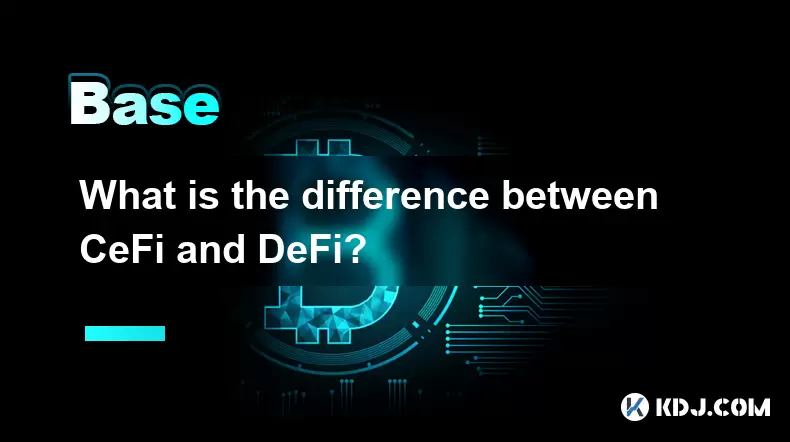
What is the difference between CeFi and DeFi?
Jul 22,2025 at 12:28am
Understanding CeFi and DeFiIn the world of cryptocurrency, CeFi (Centralized Finance) and DeFi (Decentralized Finance) represent two distinct financia...
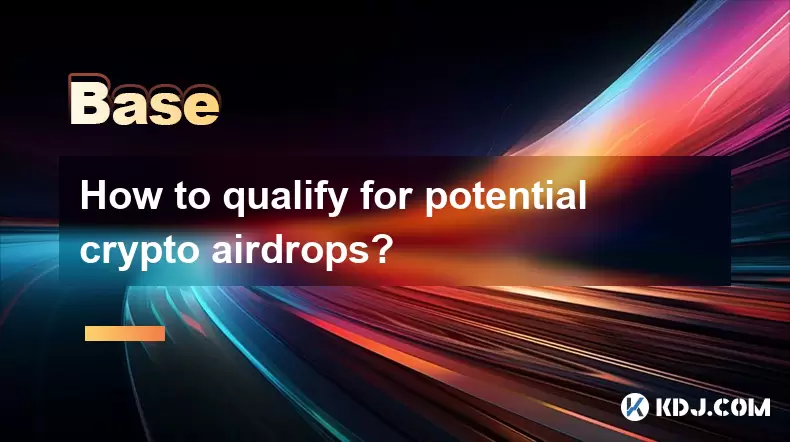
How to qualify for potential crypto airdrops?
Jul 23,2025 at 06:49am
Understanding What Crypto Airdrops AreCrypto airdrops refer to the distribution of free tokens or coins to a large number of wallet addresses, often u...
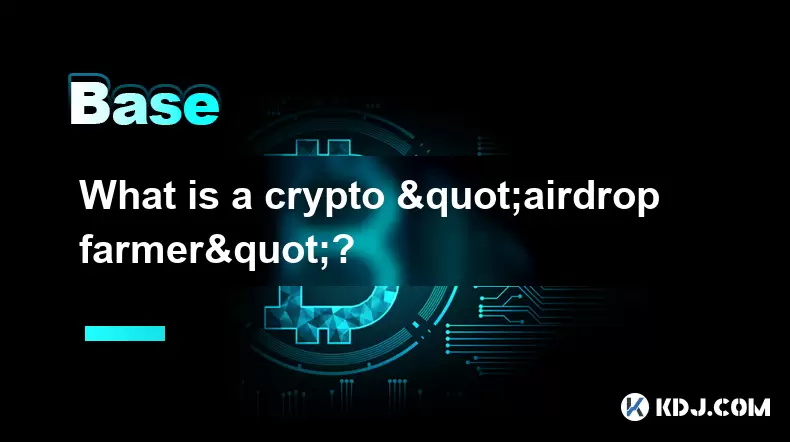
What is a crypto "airdrop farmer"?
Jul 24,2025 at 10:22pm
Understanding the Role of a Crypto 'Airdrop Farmer'A crypto 'airdrop farmer' refers to an individual who actively participates in cryptocurrency airdr...
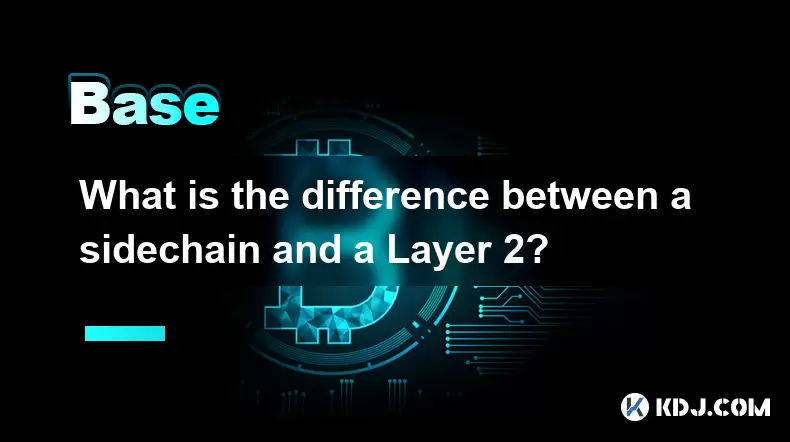
What is the difference between a sidechain and a Layer 2?
Jul 20,2025 at 11:35pm
Understanding the Concept of SidechainsA sidechain is a separate blockchain that runs parallel to the main blockchain, typically the mainnet of a cryp...
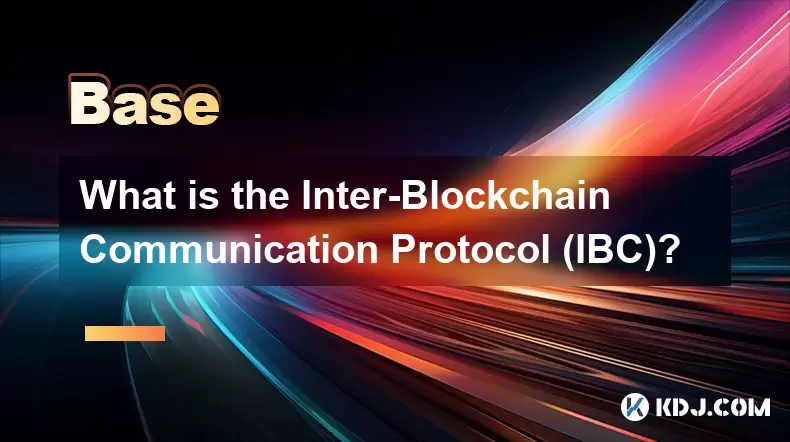
What is the Inter-Blockchain Communication Protocol (IBC)?
Jul 19,2025 at 10:43am
Understanding the Inter-Blockchain Communication Protocol (IBC)The Inter-Blockchain Communication Protocol (IBC) is a cross-chain communication protoc...
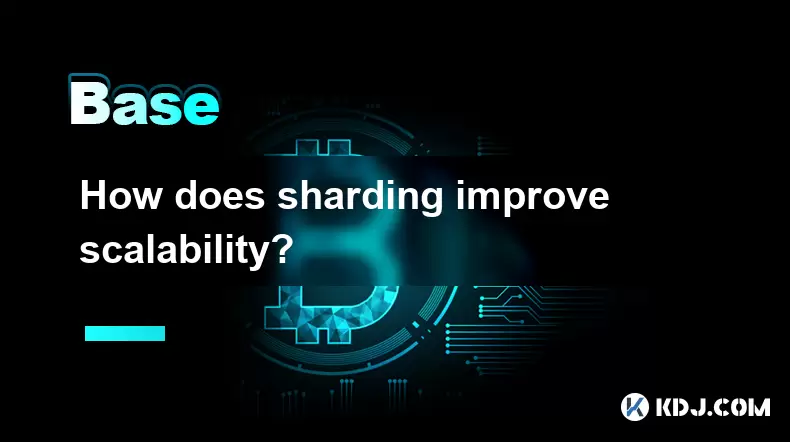
How does sharding improve scalability?
Jul 20,2025 at 01:21am
Understanding Sharding in BlockchainSharding is a database partitioning technique that is increasingly being adopted in blockchain technology to enhan...

What is the difference between CeFi and DeFi?
Jul 22,2025 at 12:28am
Understanding CeFi and DeFiIn the world of cryptocurrency, CeFi (Centralized Finance) and DeFi (Decentralized Finance) represent two distinct financia...

How to qualify for potential crypto airdrops?
Jul 23,2025 at 06:49am
Understanding What Crypto Airdrops AreCrypto airdrops refer to the distribution of free tokens or coins to a large number of wallet addresses, often u...

What is a crypto "airdrop farmer"?
Jul 24,2025 at 10:22pm
Understanding the Role of a Crypto 'Airdrop Farmer'A crypto 'airdrop farmer' refers to an individual who actively participates in cryptocurrency airdr...

What is the difference between a sidechain and a Layer 2?
Jul 20,2025 at 11:35pm
Understanding the Concept of SidechainsA sidechain is a separate blockchain that runs parallel to the main blockchain, typically the mainnet of a cryp...

What is the Inter-Blockchain Communication Protocol (IBC)?
Jul 19,2025 at 10:43am
Understanding the Inter-Blockchain Communication Protocol (IBC)The Inter-Blockchain Communication Protocol (IBC) is a cross-chain communication protoc...

How does sharding improve scalability?
Jul 20,2025 at 01:21am
Understanding Sharding in BlockchainSharding is a database partitioning technique that is increasingly being adopted in blockchain technology to enhan...
See all articles

























